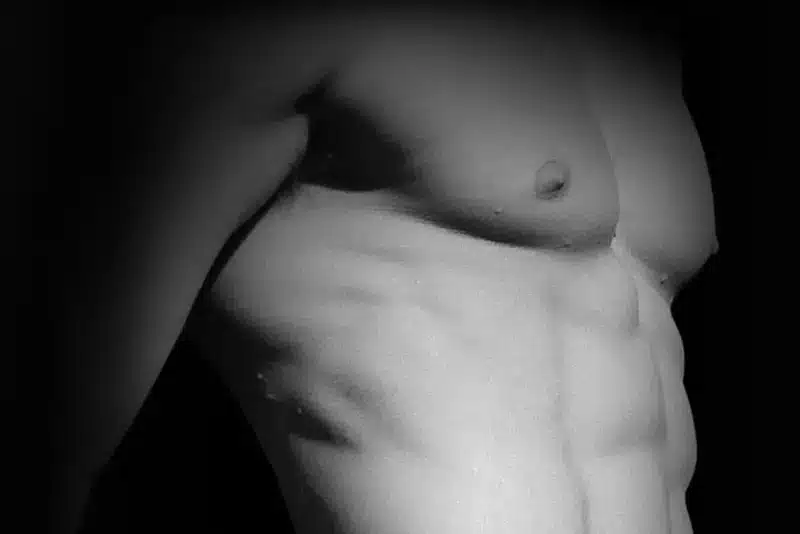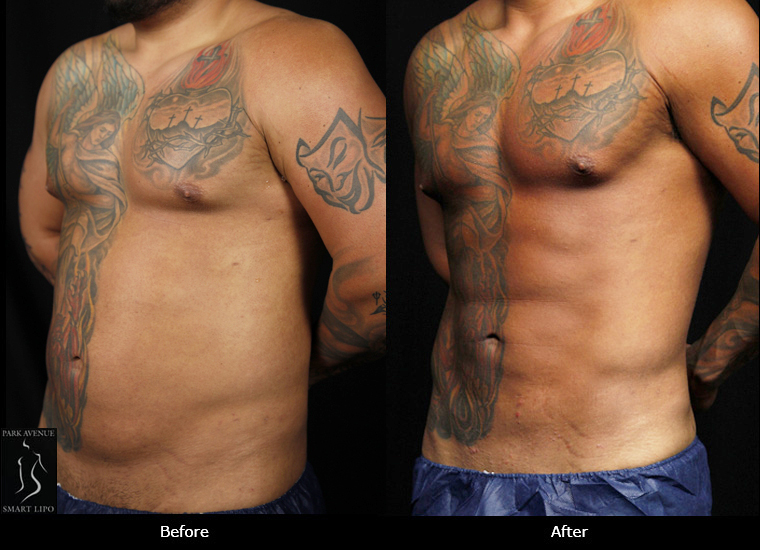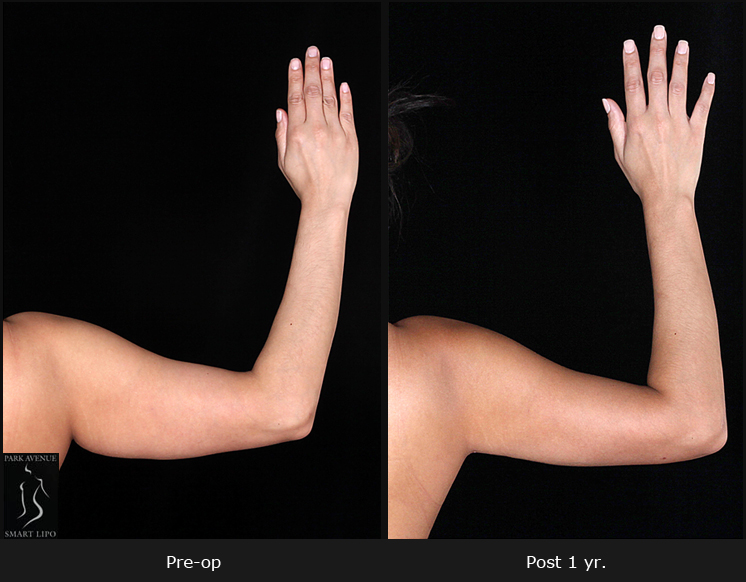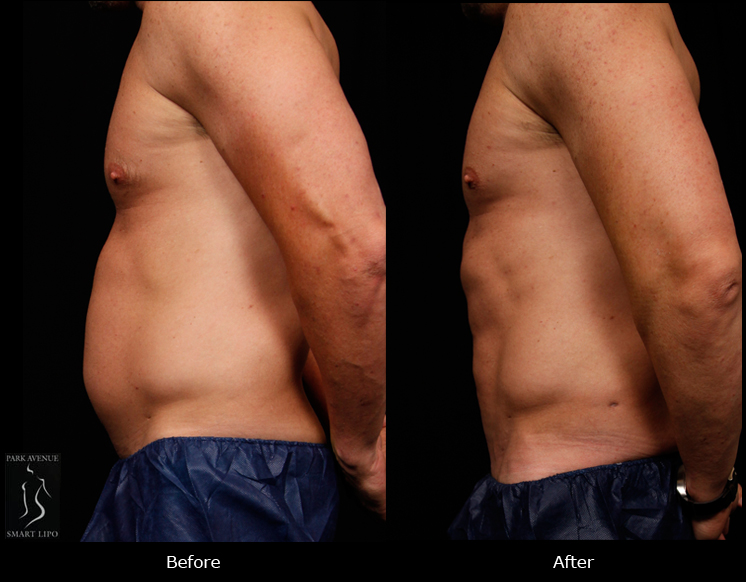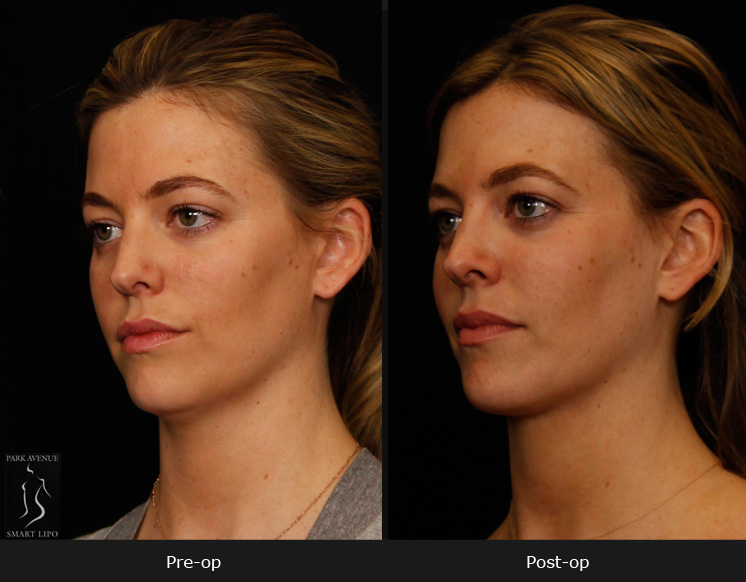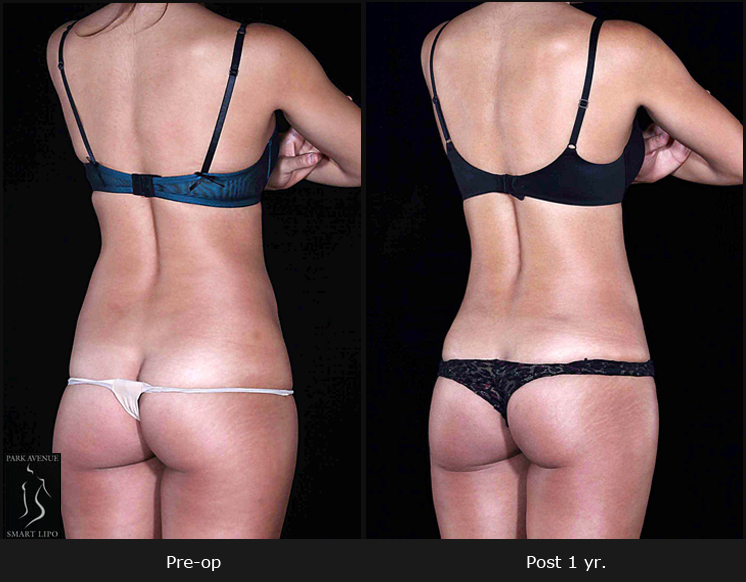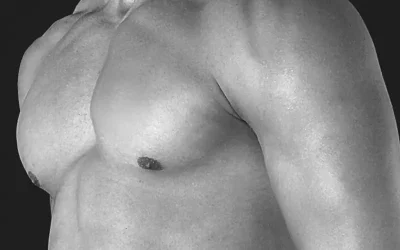Gynecomastia or overdeveloped male breasts are caused by excess localized fat, glandular tissue development, and breast skin. Gynecomastia treatment addresses these issues and reduces breast size, flattening and enhancing male chest contours.
One question most candidates ask is whether this male breast reduction procedure will leave scars. Yes, some scarring is inevitable. However, visibility and appearance of these scars can vary based on the techniques used and other factors.
Scarring after Gynecomastia Treatment: Traditional vs Minimally Invasive Techniques
Excision techniques are typically recommended when glandular breast tissue or excess skin needs to be removed to treat gynecomastia. This approach is also required if the procedure involves reducing the areola or repositioning the nipple to achieve a more natural male chest contour. The incision pattern used may vary based on the patient’s condition and the surgeon’s preferred technique. All gynecomastia surgery scars are permanent, but many are inconspicuous and can be well-concealed.
Male breast reduction surgery to remove the excess fat, tissue and skin requires significant incisions and generally leaves long scars. Skilled surgeons will see that scarring is as inconspicuous as possible by placing the incisions in discreet locations such as the natural crease lines. If incisions are placed at the outer edge of the areola, they remain well-concealed.
Advancements in techniques like minimally invasive laser liposuction using the Smartlipo Triplex device minimize male breast reduction scars. If excess fatty tissue is the primary cause of gynecomastia, liposuction techniques alone may be used. Laser lipo requires only tiny incisions to insert a small cannula to liquefy and remove the excess fat. As a result, scars are minimal, and in some cases, as small as 4mm.
Gynecomastia Surgery Recovery and Healing Process
Proper after care following gynecomastia surgery is important for smooth recovery and obtaining the best possible results. Wearing a compression vest during the first 4 weeks will help the skin and tissue contract and settle.
Each patient’s recovery journey is different, depending on their specific case. During the first week following the treatment, you should take complete rest. Swelling, bruising and pain are common side effects and the scars will become visible as the stitches dissolve. Keeping the site clean is important for the scars to fade without issues.
Swelling and bruising will reduce during the second week, and most patients are able to resume light activities. However, strenuous activity should be avoided for the first two weeks after surgery. Mild tightness and discomfort typically persists for up to four weeks and can impact your activity level. In the following weeks, thick and dark scar tissue will appear as the skin heals.
The healing period after gynecomastia surgery is usually complete after 6 weeks and the compression vest is no longer needed. The garment would have helped hold the skin in place, supported proper healing of the pectoral area, and minimized the risk of long-term scarring. While it can take several months for scars to fade to their natural color, by this stage, they should already appear lighter, flatter, and softer-gradually becoming much less noticeable.
How to Care for Scars after Male Breast Reduction Surgery
Taking care of your incisions after gynecomastia surgery is key to reducing visible scarring. Proper wound care supports faster healing and helps scars fade more effectively over time. Here are some key tips:
- Proper wound care: Follow your surgeon’s instructions for cleaning the incision sites. Avoid scrubbing or applying harsh products.
- Sun protection: UV rays can darken healing scars. Use sunblock (once the wound has fully closed) or keep the area covered when outdoors.
- Don’t pick at scabs: Let them fall off naturally to avoid delaying healing or worsening scars.
- Use recommended scar treatments: Once the incisions are healed, your doctor may suggest silicone gels or sheets, which are clinically proven to improve scar appearance. Gentle massage of the treated area—using your hands or a roller device-can significantly enhance surgical results. This helps break down scar tissue, promotes even skin distribution, and contributes to a smoother, more natural-looking chest contour.
Be patient – scars usually fade over 6-12 months to become softer, flatter, and much less noticeable.
Select the Right Plastic Surgeon
If you are considering gynecomastia treatment, choose a plastic surgeon who has experience in the field. Experts understand specifically how to reduce breast tissue in men and provide a more masculine looking chest. If your procedure requires laser liposuction, make sure the surgeon has performed numerous male breast reduction surgeries using the minimally-invasive Smartlipo technique.
Choosing the right surgeon can make a big difference-not just in how your chest looks after surgery, but also in how well your scars heal. The technique your surgeon uses is key to minimizing visible scarring. A skilled plastic surgeon will carefully place incisions in natural skin folds or less noticeable spots, like around the areola, to help keep scars out of sight. Their attention to detail when handling tissue, reducing trauma, and closing incisions with fine sutures plays a big role in how smooth the healing process goes. Plus, a good surgeon will guide you through proper aftercare and offer tips on the best treatments to fade gynecomastia scars and help you get the best results.
Achieve a flatter, more defined chest-and feel more comfortable in your own skin.
Call 212-265-2724 to schedule your consultation!

